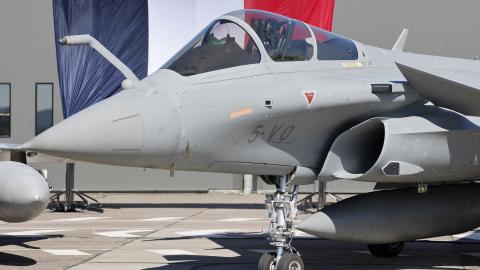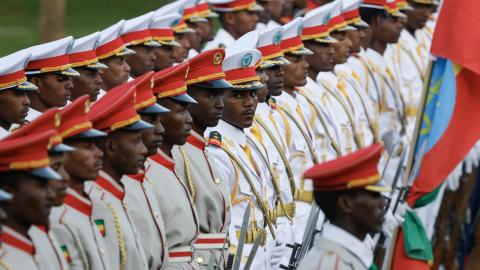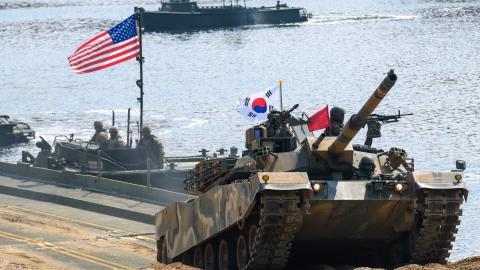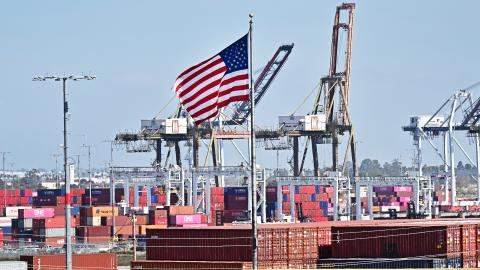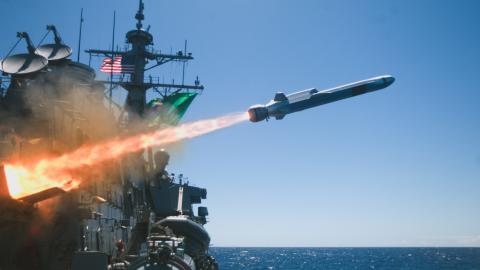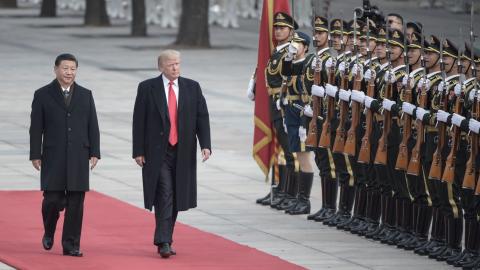One month into Trump 2.0, the global order is in turmoil. Shock, outrage and confusion ripple through diplomatic circles and financial markets. Yet, the real surprise is not what President Trump is doing but the world’s astonishment that he is doing exactly what he promised.
For those paying attention, the blueprint for Mr. Trump’s second administration has been clear for nearly 10 years. Especially since the 2023-2024 election cycle, his messaging has been consistent: The existential struggle of our time is between the United States and an expansionist, revisionist Chinese Communist Party (CCP) whose economy is more than 10 times bigger than Russia’s, whose ideological hostility toward the U.S. has been uncompromising, whose military and technological advancements have been shockingly menacing, and whose desire to dominate the world has been explicit.
Everything else — diplomatic niceties, multilateral distractions in Europe and the Middle East, and the self-congratulatory pieties of the global elite — must take a back seat to the defining mission of this administration: To break China’s grip on global power and restore democratic America’s dominance.
In Mr. Trump’s first term, China was designated the United States’ foremost national security threat. Yet, while aggressive, Trump 1.0’s strategy against China was hampered by intense efforts to survive domestic partisan attacks, largely compartmentalized within economic and trade policy and greatly impeded by the catastrophic contingency of China’s own making: the global COVID-19 scourge.
Trump 2.0 is different.
With a resounding electoral victory, a deliverance from making unenforceable trade deals with Beijing and having survived the China pandemic, the gloves are off. The battle against China is now an all-of-government effort, reaching into every domain of national power — economic, military, diplomatic and ideological. Every major foreign policy decision from this administration must be understood in this context.
This strategic clarity is evident in early initiatives: In Panama, China has spent decades infiltrating Panama’s infrastructure, securing control over one of the world’s critical shipping arteries. Trump 2.0 is reversing this, countering the Belt and Road Initiative and reclaiming U.S. influence. Greenland, a key chokepoint for China’s long-range strike capabilities and a vast island rich in rare earth minerals is strategically vital. Mr. Trump is reviving efforts to block Chinese economic and military encroachment in North America.
Trump 2.0 reinforces continental security, preventing China from leveraging supply chains against U.S. interests. The days of China exploiting tariff exemptions and transshipping cheap goods through Mexico and Canada — and through many other friendly countries, some with security arrangements with the U.S. — are numbered.
Wars in Ukraine and Gaza serve as distractions from America’s new strategic focus on China. Beijing knows this and has spared no effort to sustain Russia with financial, technological and military support to prolong the war in Europe, tying up U.S. assets.
Meanwhile, China’s $400 billion pledge to Iran in 2021 has emboldened Tehran, fueling conflicts and facilitating Hamas and Hezbollah attacks on Israel, thus destabilizing the Middle East. Trump 2.0 is shifting priorities: Europe must shoulder its own burdens in Ukraine because China — not Russia — is the primary adversary. The Abraham Accords must come to their logical conclusion, with all the major Arab nations recognizing Israel’s right to exist.
One major challenge is European complacency. Protected for decades by American military guarantees, Europe remains fixated on its own parochial concerns. Under Trump 2.0, European trade protectionism is no longer an irritant but a target. The message is clear: If Europe wants U.S. protection, it must align with America’s strategic focus on China.
Trump 2.0 has also adopted a pragmatic approach toward Russia. The Biden administration’s policies pushed Moscow deeper into China’s embrace. Mr. Trump’s strategy is different: Russia could be a potential counterweight to Beijing. The U.S. signals openness to recalibrating relations if Russia distances itself from China. This is not about naivety toward Vladimir Putin’s brutal regime but a calculated move to divide America’s adversaries.
China understands that America’s greatest vulnerability lies in internal decay. Cultural and institutional fragmentation, exacerbated by identity politics and elite detachment, weaken national resilience. Trump 2.0 sees the clashes on the homefront not just as a cultural battle but as a strategic liability. Addressing America’s internal divisions is as crucial as countering China abroad.
Clarity of purpose defines Trump 2.0. The administration refuses to be bogged down in every crisis, focusing American power where it matters most. This is not unpredictability — this is a grand strategy executed with brutal efficiency.
The era of distraction, internal decay and strategic drift is over. The world must now reckon with a reality Washington’s elite long ignored: The battle for global dominance is here, and it is centered on China. If Mr. Trump succeeds, America’s dominance will be reaffirmed. If he fails, the world order will be reshaped — on Beijing’s terms.
